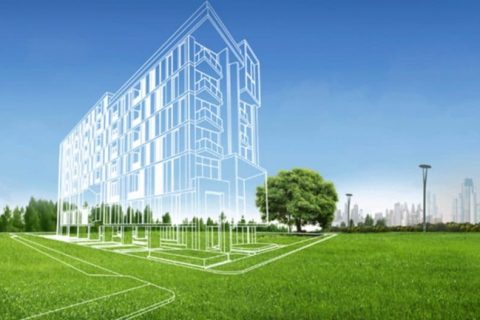Despite the abysmal state of physical infrastructure in west Chennai, developers are banking on development projects and low land prices to aggressively launch projects here.
While south Chennai saw a majority of the launches in the first quarter of 2015 (H1), west Chennai was also one of the best-performing micro-markets. Relatively affordable residential prices, proximity to employment hubs, and developing social infrastructure, continue to drive both these micro-markets. Due to its competitive pricing, west Chennai has witnessed steady growth in the last two years. A report by realty consultants Knight Frank India states that although new launches have dipped from 44 per cent (Jan – June 2014) to 36 per cent (Jan – June 2015), sales have remained steady.
In H1 2015, the average price of newly launched units in this region escalated over 20 per cent to Rs. 3,933 per sq.ft. from Rs. 3,258 per sq.ft. as was in the third quarter of 2014. Samir Jasuja, CEO and founder of PropEquity, says this price appreciation should be taken in context with other regions in Chennai reeling under price correction, and almost negligible real estate activity.
While apartments in central and south Chennai remain unaffordable for most middle-income groups, those in west and north Chennai are becoming popular among this group. Prime localities in the west include Anna Nagar, Mogappair, Ashok Nagar and KK Nagar, and projects here are priced at an average of Rs. 8,500 per sq. ft. Arun Kumar, managing director of Casa Grande, says these prices are still lower in comparison to the other parts of the city. Padi, Mogapair, Nolambur, Poonamaallee, Porur, Ambathur, and Nandambakkam are other localities that are rapidly developing and the land prices are attractive for developers. Apartment units are priced between Rs. 4,000 and Rs. 6,000 per sq.ft.
Mallika Ravi, CEO of Lancor Holdings, says buyers do not mind travelling a couple of kilometres as long the units are low-priced. For instance, Padi and Mogappair that are closer to Anna Nagar West are sought after. Porur and Poonamallee that are closer to Vadapalani and Valasaravakkam are also witnessing growth.
Ashish Puravankara, managing director of Puravankara Projects, says, “This zone offers housing for end users in the mid to affordable housing segment and also options for those looking for ultra-luxury weekend homes.” White collared employees are the primary buyers of residential projects, apart from IT employers of Ambattur. Factors such as increasing rental and selling prices also have made these areas an ideal investment zone. Shankar points out that there has been lot of investment in the IT developments in Ambattur and manufacturing industries in Sriperumbadur and Oragadam. The large numbers of existing and upcoming manufacturing units along the Sriperumbudur-Oragadam industrial corridor seem to fuel realty development in the west. Jasuja says companies such as Daimler, Foxconn, Sony and Lenovo, have proposed plans to set up manufacturing plants here and this could further propel realty growth.
Infrastructure is a key factor that opens the doors of development and the Outer Ring Road (ORR) has kick-started the investment potential of the west. “The completion of ORR would bring faster, better connectivity to the city and increase economic activity along the corridor,” says A. Shankar, national director, JLL. Another important infrastructure development is the phase II of the Metro Rail that will connect the western parts of the city to the central regions. Such projects not only improve connectivity, but facilitate housing demand in the adjoining areas.
Despite such projects in the pipeline, many wonder how localities such as Korattur and Pudur that lack necessary infrastructure such as roads, water lines, etc., are still bringing in investment. How are developers luring buyers and ensuring them value for money? Shankar says developers forecast future development of the region to sell their inventories. All developments in west Chennai are large township developments with 150-2000 housing units. These developments provide all the basic amenities and are self-sustaining. He says, “The onus of providing physical infrastructure such as roads, water and so on, rests with local authorities and buyers are confident that once the area develops, such infrastructure would come up too.”
Ravi says, to compensate for the lack of physical infrastructure, developers offer additional amenities such as power backup systems, water and sewage treatment plants. Other essentials such as supermarkets, medical stores, sporting facilities, are also provided in the township. “A few developers even go to the extent of providing transport facilities from the township to the railway station and bus stop,” she says.
Speaking of the potential west Chennai holds, Purvankara, who has an upcoming affordable housing project in Thirumazhisai, says the price points in Poonamallee make the west attractive for end-users and investors with a 5 to 7 year perspective. “This region is very promising in terms of employment generation, leading to substantial growth in the realty sector. Several Grade A developers have invested in high and mid-end residential projects.” Kanchana Krishnan, director-Chennai, Knight Frank India, says, Chennai is an end-user-driven market and the demand-supply scenario determine prices to a large extent. “Although there would be no immediate rise in prices, the city would witness an 8-10 per cent growth in capital values in the next 12-15 months.”
This article was originally published on www.thehindu.com dated August 28, 2015
Image Credit: www.thehindu.com





